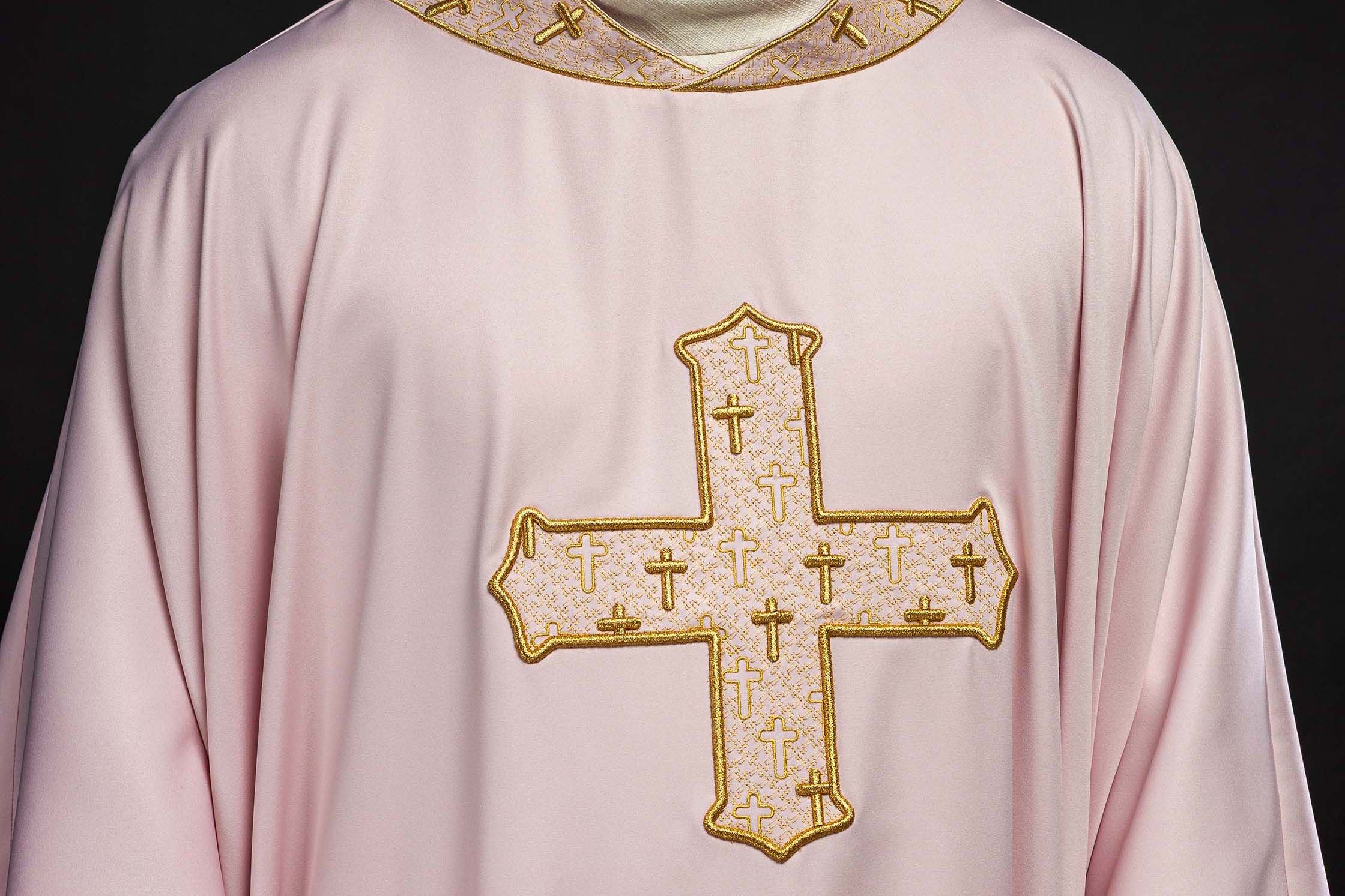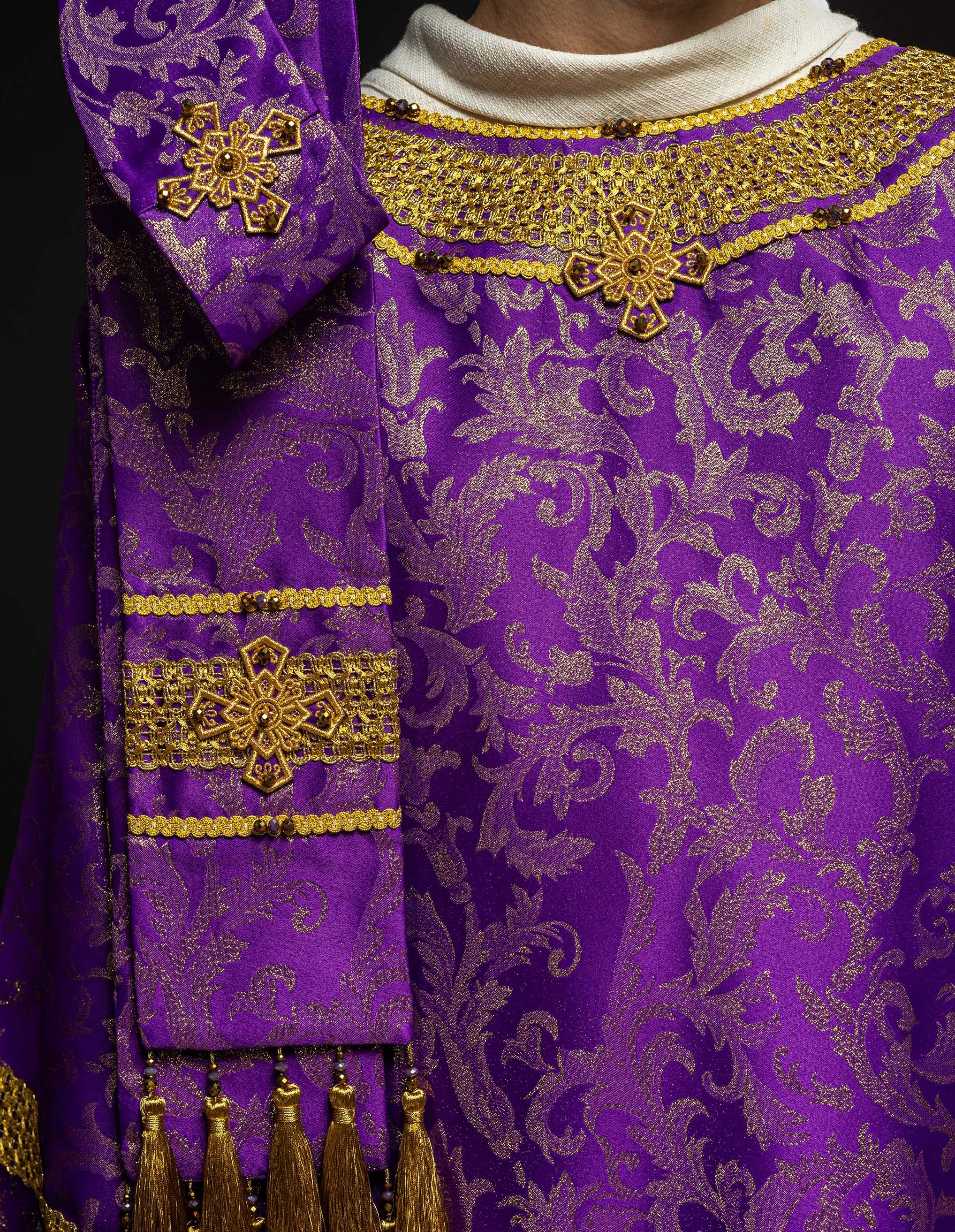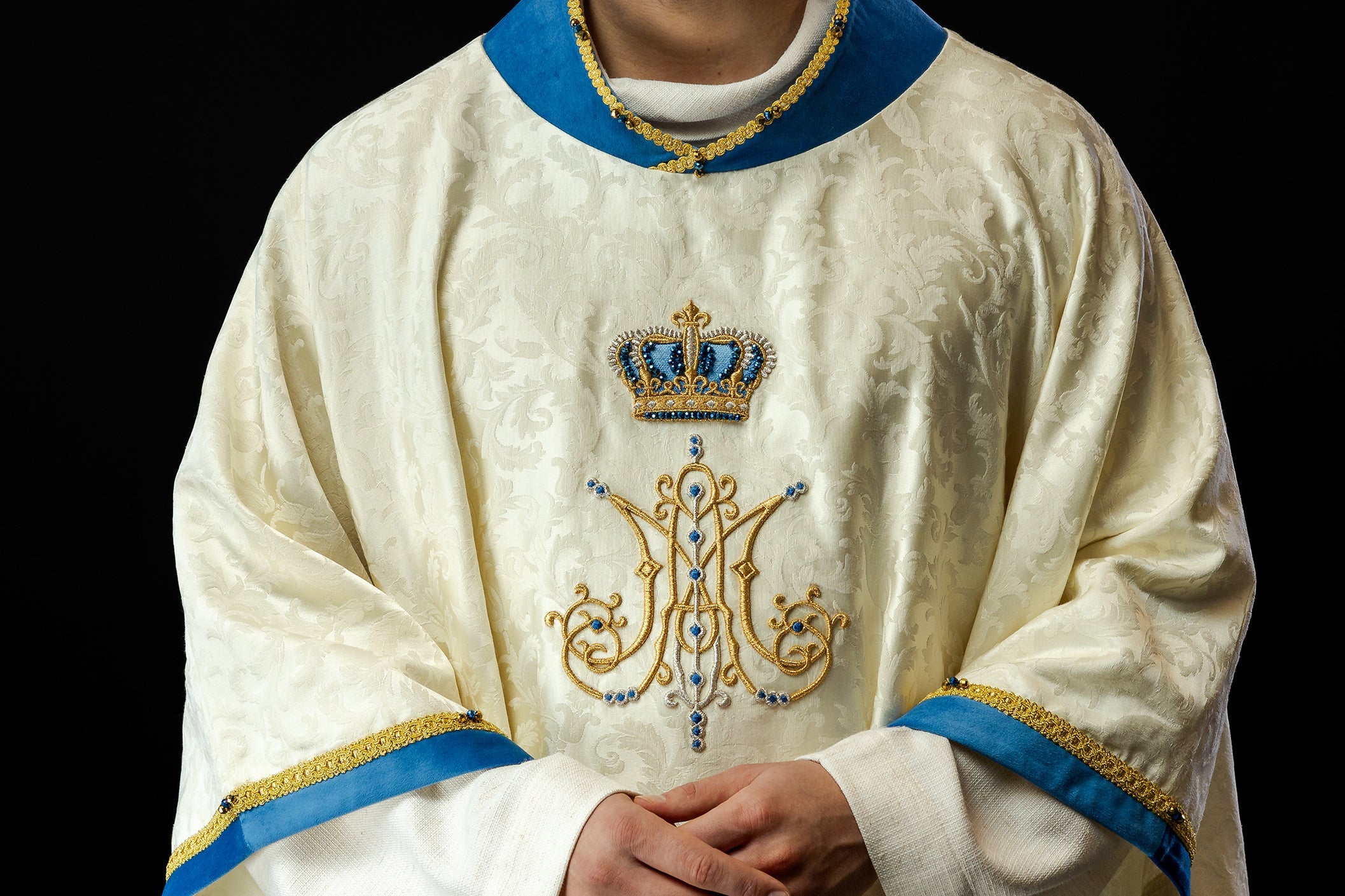
Holy Week Liturgy – A Step-by-Step Guide
Holy Week Liturgy – Step by Step
Holy Week is a special time in the liturgical year, full of deep reflection, penance, and the joy of the Resurrection. From Palm Sunday, through the Paschal Triduum, to Easter Sunday, each day brings unique rites and messages. Understanding the course of the liturgy in these days allows for a fuller experience of the mystery of Redemption. In this guide, we will bring you closer to the individual stages of Holy Week, paying attention to the symbolism, prayers, and appropriate liturgical vestments that emphasize the solemn character of these holidays.
Palm Sunday – The Day of the Triumphal Entry
The liturgy of Palm Sunday begins Holy Week, commemorating Jesus' triumphant entry into Jerusalem. This day is characterized by a double meaning: the joyful welcome of Christ as king and, at the same time, the announcement of His passion and death.
What Happens on Palm Sunday?
The celebrations begin with the blessing of palms, which symbolize triumph and martyrdom. Then, a solemn procession is celebrated, during which the faithful carry palms, singing "Hosanna to the Son of David." This is a reference to the crowds greeting Jesus with branches of trees.
Symbolism of Palm Sunday
Palms are a symbol of victory, but also of fragility and transience. The green branches, blessed on this day, are meant to remind us of the triumph of life over death, of the royal dignity of Christ, and of the need for conversion and waiting for His Passover.
Liturgical Vestments for Palm Sunday
For Palm Sunday, the liturgical vestments of the priest are usually red. This color symbolizes martyrdom, the blood shed by Christ, and love.
Holy Monday, Tuesday, and Wednesday – Days of Preparation
The first days of Holy Week, from Monday to Wednesday, are a time of further preparation for the Paschal Triduum. The liturgy of these days focuses on further events preceding the passion of Jesus.
Holy Monday: Anointing at Bethany
On this day, the anointing of Jesus with fragrant oil by Mary Magdalene in Bethany is commemorated, which foreshadowed His burial. It is a moment of deep humility and preparation for sacrifice.
Holy Tuesday: Announcement of Betrayal and Denial
The liturgy of Holy Tuesday focuses on the announcement of Judas' betrayal and Peter's denial of Jesus. These events highlight human weakness and the need to persevere in faith.
Holy Wednesday: Judas' Betrayal
Holy Wednesday is the day of commemorating the betrayal of Judas Iscariot, who sold Jesus for thirty pieces of silver. It is a symbolic beginning of the Way of the Cross and preparation for the most important events.
Liturgical Vestments on Weekdays of Holy Week
On the weekdays of Holy Week, the priest usually uses vestments of the color purple, symbolizing penance, conversion, and waiting.
Paschal Triduum – The Heart of Holy Week
The Paschal Triduum is the most important period in the entire liturgical year, encompassing Holy Thursday, Good Friday, and Holy Saturday. These are the days when the Church commemorates the passion, death, and resurrection of Jesus Christ.
Holy Thursday: Institution of the Eucharist and the Priesthood
The liturgy of Holy Thursday has a double character. In the morning, the Chrism Mass is celebrated in cathedrals, during which the holy oils are consecrated and priestly promises are renewed. In the evening, the Mass of the Lord's Supper is celebrated, commemorating the Last Supper, during which Jesus instituted the sacrament of the Eucharist and the sacrament of the Priesthood. After the Mass, the Blessed Sacrament is transferred to the so-called "darkness" for adoration, symbolizing Jesus' prayer in the Garden of Gethsemane.
Liturgical Vestments for Holy Thursday
During the Mass of the Lord's Supper, the priest uses white vestments, symbolizing joy for the institution of the Eucharist and the Priesthood.
Good Friday: Passion and Death of Jesus
Good Friday is the day commemorating the passion and death of Jesus on the cross. It is a day of strict fasting and abstinence. The liturgy of Good Friday is unique – Mass is not celebrated. The central point is the solemn Liturgy of the Lord's Passion, which includes the reading of the Passion according to St. John, a solemn universal prayer, the adoration of the Cross, and Holy Communion.
Liturgical Vestments for Good Friday
On Good Friday, the priest celebrating the Liturgy of the Lord's Passion celebrates it in red vestments, symbolizing the martyrdom of Christ and the blood shed.
Holy Saturday: Vigil and Resurrection
Holy Saturday is a day of silence and waiting for the Resurrection. The Church remains in prayer at the symbolic Tomb of the Lord. The key moment is the solemn Paschal Vigil, which begins after dark. This is the most important Mass of the year, the celebration of the Lord's Resurrection. It begins with the Liturgy of Light (blessing and procession with the Paschal Candle), then the Liturgy of the Word, the Baptismal Liturgy (blessing of water, baptisms, and renewal of baptismal promises), and the Eucharistic Liturgy.
Liturgical Vestments for the Paschal Vigil
During the Paschal Vigil, the priest celebrates the liturgy in white vestments, symbolizing joy for the Resurrection and the victory of life over death.
Easter Sunday – Paschal Joy
Easter Sunday is the culmination of the entire Holy Week and the most important holiday in the Catholic Church. On this day, we commemorate the triumphant victory of Jesus over death.
Liturgy of Easter Sunday
The celebrations begin with a solemn Mass, often preceded by a Resurrection procession, which symbolizes the exit from the empty tomb. The joy of the Resurrection is expressed in the singing of "Alleluia," solemn readings, and the blessing of the new fire and the Paschal Candle – the symbol of the Risen Christ.
Symbolism of Easter Sunday
The Resurrection of Jesus is the foundation of the Christian faith. It symbolizes the victory of life over death, hope for salvation, and the promise of eternal life. Easter Sunday is the most beautiful testimony of God's love and power.
Liturgical Vestments for Easter Sunday
On Easter Sunday, the priest, like during the Paschal Vigil, uses white vestments, which are a symbol of joy, purity, and glory.
Liturgical Accents and Symbols in Holy Week
Holy Week is a time when liturgical symbols take on special significance. From the colors of the vestments, through the gestures of the priest, to the objects used – everything has its deep message.
Meaning of the Colors of Liturgical Vestments
The color red, dominant on Good Friday, symbolizes martyrdom and love, white on Holy Thursday and Easter – joy, purity, and resurrection, and purple on the remaining days of Holy Week – penance and waiting.
Symbolism of the Paschal Candle
The Paschal Candle, lit during the Paschal Vigil, is a symbol of Christ – the light of the world. It features a cross, the letters Alpha and Omega, and the digits of the current year, as well as five grains of incense symbolizing the five wounds of Christ.
Liturgical Accessories Emphasizing Solemnity
Other liturgical accessories also play an important role, such as chalices, patens, burses for corporals, and veils. Their richness of decoration, often made of precious materials and with the symbolism of embroidery, emphasizes the solemn character of the liturgy, especially during such an important period as Holy Week. Haftina Textile Group offers a wide selection of beautiful vestments and liturgical accessories that can help create the right atmosphere in the church during these special days.
Summary
Holy Week is the heart of the liturgical year, a time of deep reflection on the passion, death, and resurrection of Jesus Christ. Knowing and understanding the course of each day, from the solemn entry into Jerusalem, through the mystery of the Last Supper, the passion on the cross, to the triumphant Resurrection, allows for a fuller experience of this fundamental truth of faith. Every element of the liturgy, from the colors of the vestments to the symbols, has its meaning and helps the faithful enter into the mystery of Redemption. If you are looking for unique vestments and liturgical accessories that will help emphasize the solemnity of the Holy Week celebrations, we invite you to familiarize yourself with the offer of haftinausa.com, where you will find top-quality products, made with passion and attention to every detail.
```




